Monarch Butterfly Proposed for Listing Under the US Endangered Species Act
go.ncsu.edu/readext?1043634
en Español / em Português
El inglés es el idioma de control de esta página. En la medida en que haya algún conflicto entre la traducción al inglés y la traducción, el inglés prevalece.
Al hacer clic en el enlace de traducción se activa un servicio de traducción gratuito para convertir la página al español. Al igual que con cualquier traducción por Internet, la conversión no es sensible al contexto y puede que no traduzca el texto en su significado original. NC State Extension no garantiza la exactitud del texto traducido. Por favor, tenga en cuenta que algunas aplicaciones y/o servicios pueden no funcionar como se espera cuando se traducen.
Português
Inglês é o idioma de controle desta página. Na medida que haja algum conflito entre o texto original em Inglês e a tradução, o Inglês prevalece.
Ao clicar no link de tradução, um serviço gratuito de tradução será ativado para converter a página para o Português. Como em qualquer tradução pela internet, a conversão não é sensivel ao contexto e pode não ocorrer a tradução para o significado orginal. O serviço de Extensão da Carolina do Norte (NC State Extension) não garante a exatidão do texto traduzido. Por favor, observe que algumas funções ou serviços podem não funcionar como esperado após a tradução.
English
English is the controlling language of this page. To the extent there is any conflict between the English text and the translation, English controls.
Clicking on the translation link activates a free translation service to convert the page to Spanish. As with any Internet translation, the conversion is not context-sensitive and may not translate the text to its original meaning. NC State Extension does not guarantee the accuracy of the translated text. Please note that some applications and/or services may not function as expected when translated.
Collapse ▲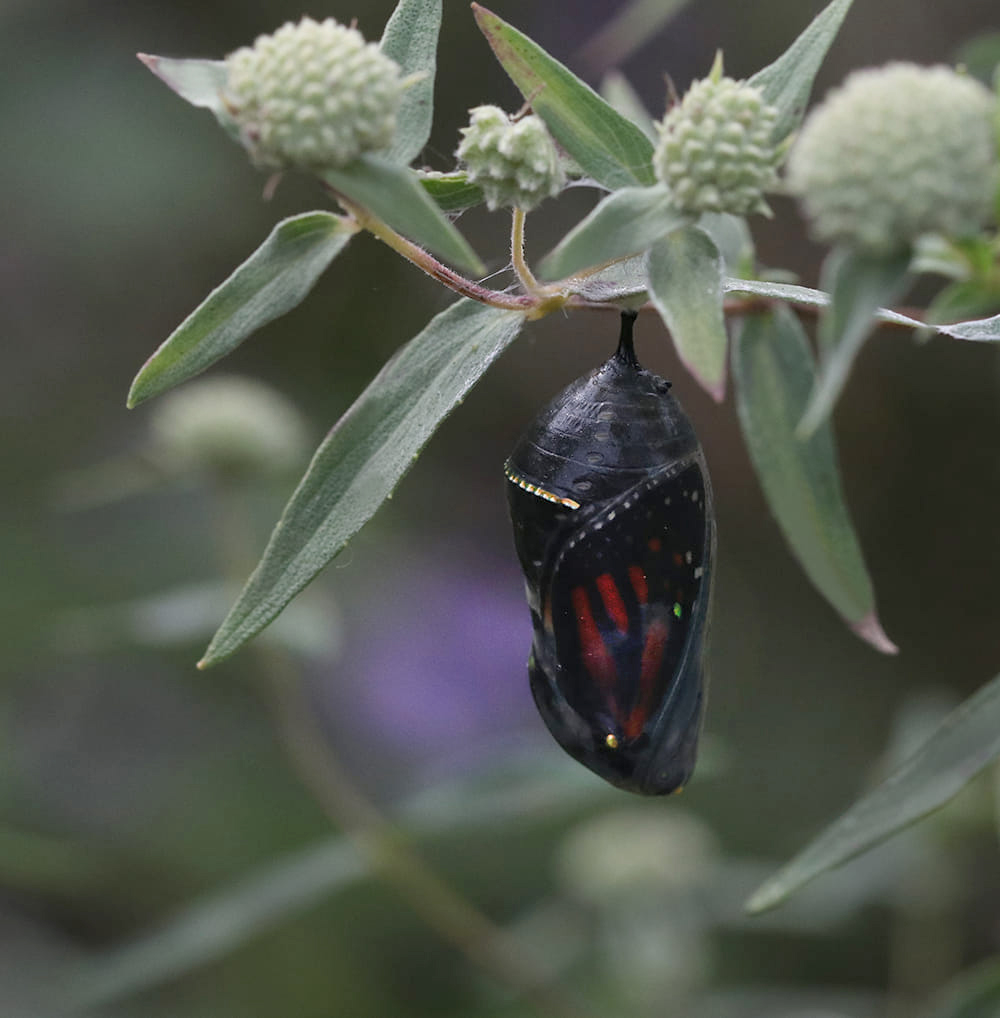
Monarch butterfly about to emerge from a chrysalis on mountain mint. Photo by Debbie Roos.
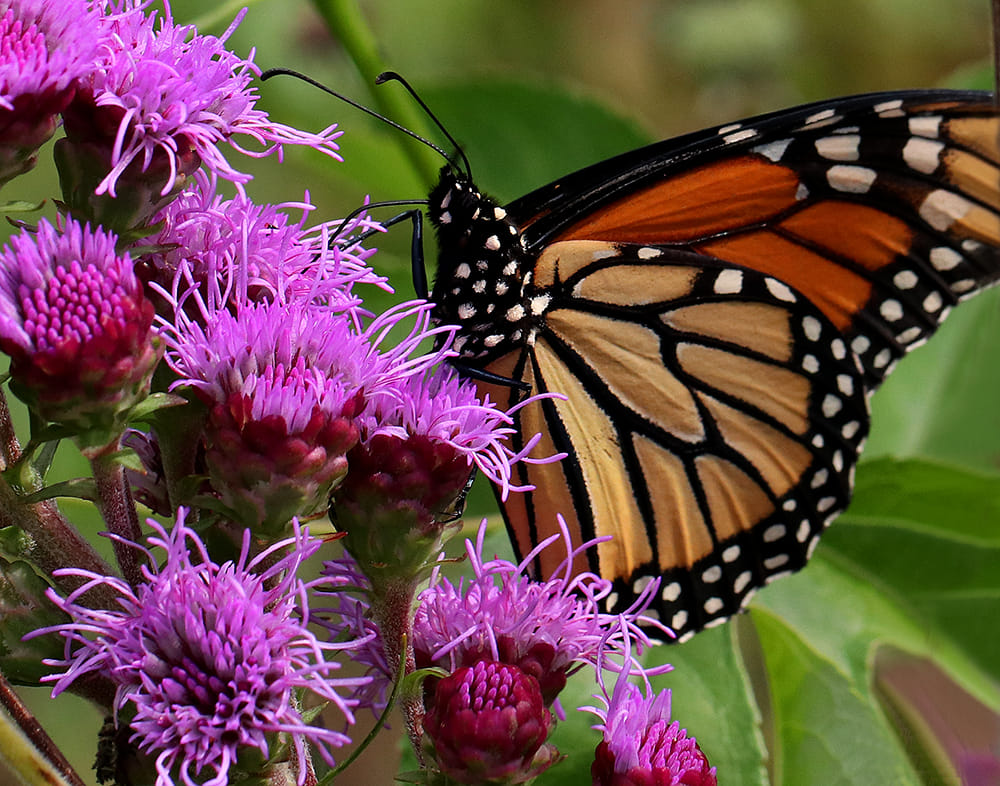
Monarch on blazing star. Photo by Debbie Roos.
The U.S. Fish & Wildlife Service announced on December 10 that they are proposing to list the monarch butterfly as a threatened species under the U.S. Endangered Species Act.
Scientists estimate that monarch populations have declined by about 80% in the eastern U.S. and 95% in the western U.S. since monitoring began several decades ago. Last winter, the eastern monarchs’ overwintering site in Mexico shrank to a mere 2.2 acres, down from almost 45 acres in the late 1990s.
The causes for this serious decline in monarch populations include habitat loss (especially milkweed, the monarch’s host plant); loss of overwintering sites in Mexico and California; and widespread pesticide use.
The Fish & Wildlife Service is seeking public input on their proposal to list the monarch as a threatened species. Public comments will be accepted on the proposal until March 12, 2025. The agency will then evaluate the comments and any additional information on the species and determine whether to list the monarch butterfly.
How to provide comments on the proposal: for details on the proposed rule and how to submit comments visit this website.
Here in Chatham County, I usually see the first monarch butterfly of the year right around Tax Day, April 15. Then I start looking for their eggs on the different species of native milkweed in my pollinator garden and soon after that, the first caterpillars. I will see several generations throughout the year through the fall. See photos below.
You can help monarchs by planting milkweeds on your property! You can do it at any scale: from pots on a patio, to a pollinator garden, to a large meadow. Look for native species from local nurseries; they are easy to grow and don’t require irrigation once established.

Monarch egg on common milkweed. Photo by Debbie Roos.

Close-up of monarch egg on common milkweed. Photo by Debbie Roos.
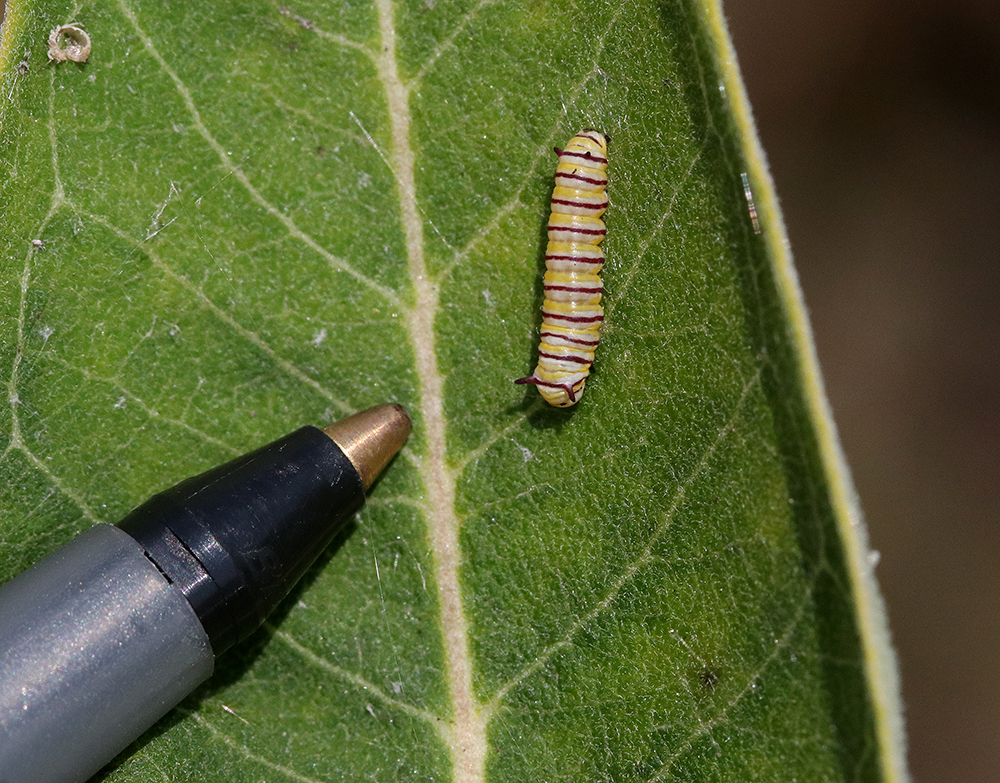
Newly hatched monarch caterpillar (with a pen tip for scale). Photo by Debbie Roos.
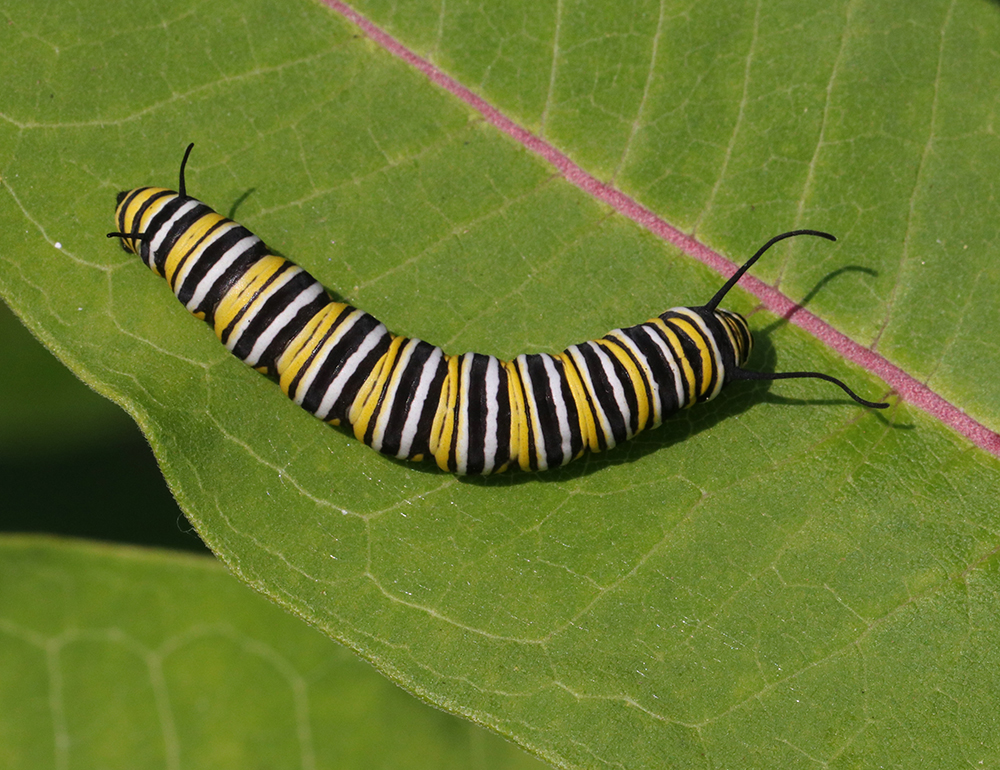
Monarch caterpillar on common milkweed. Photo by Debbie Roos.
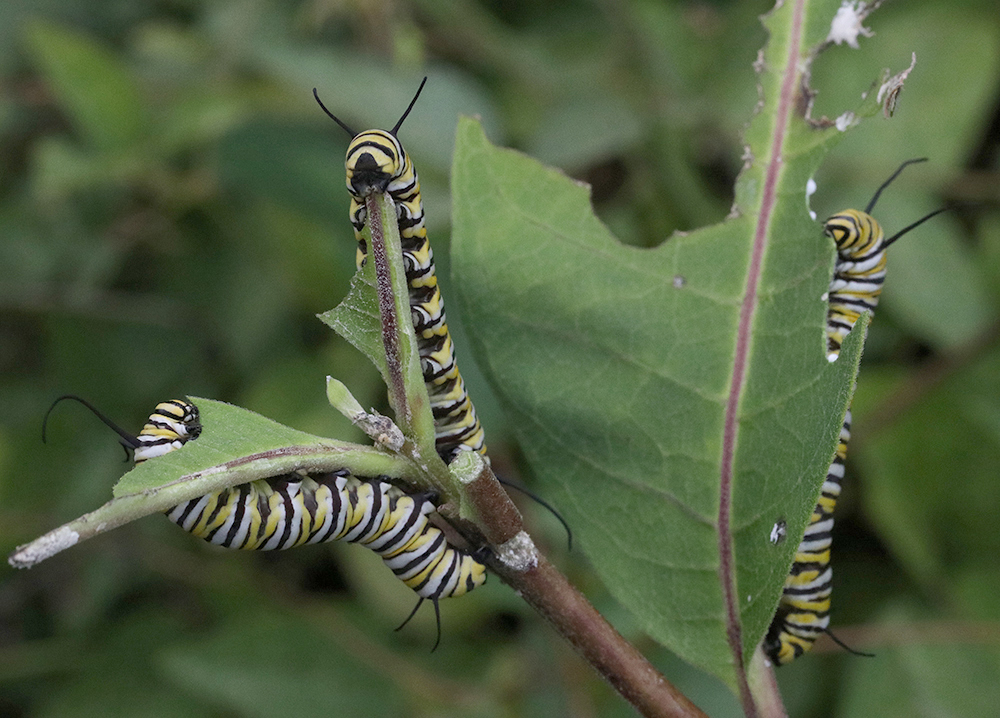
Monarch caterpillars feeding on milkweed. Photo by Debbie Roos.
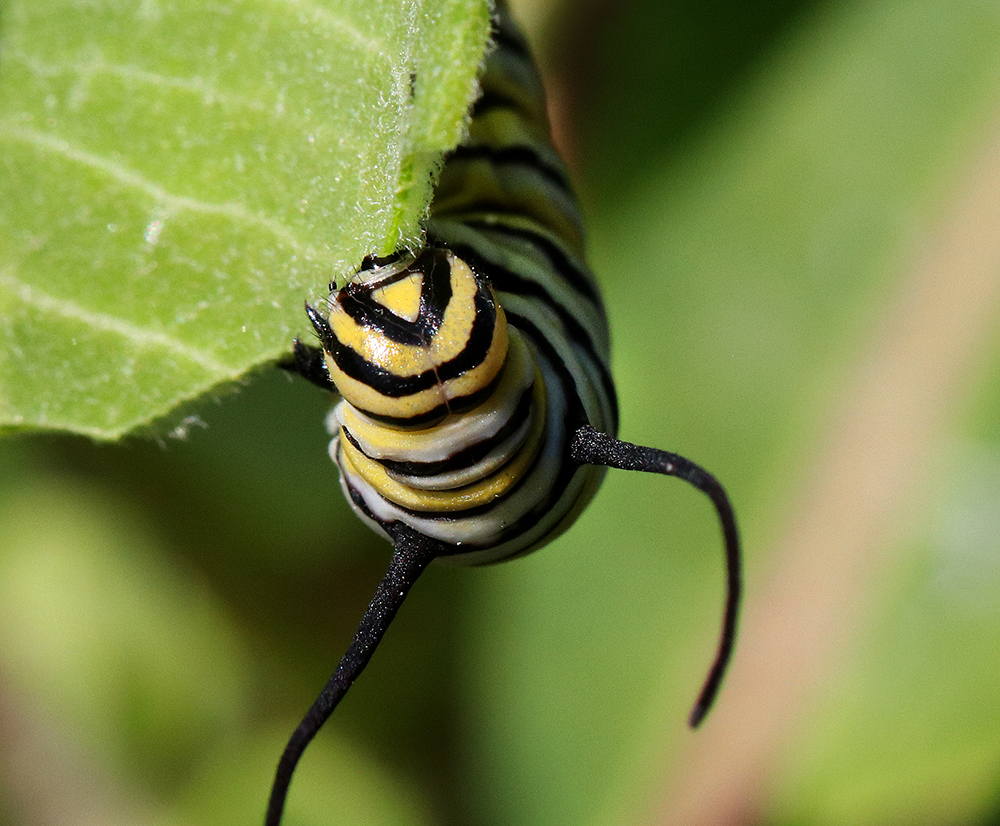
Close-up of a monarch feeding on the edge of a milkweed leaf. Photo by Debbie Roos.

Freshly molted monarch caterpillar. Monarchs molt five times in the larval stage. Note the shed exoskeleton behind it. They usually eat the shed skin. This was so recent that the tentacles at the head had not yet unfurled. Photo by Debbie Roos.
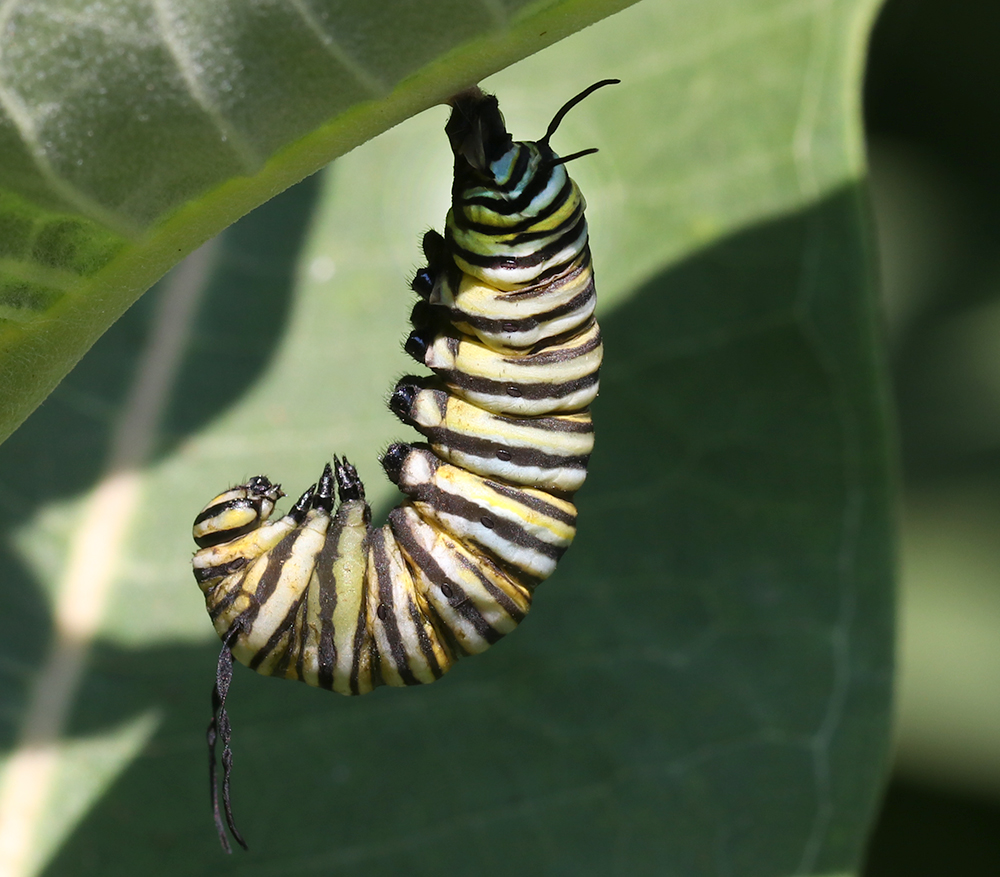
This monarch caterpillar is suspended from a common milkweed leaf in a J-shape, preparing to form a chrysalis. Photo by Debbie Roos.
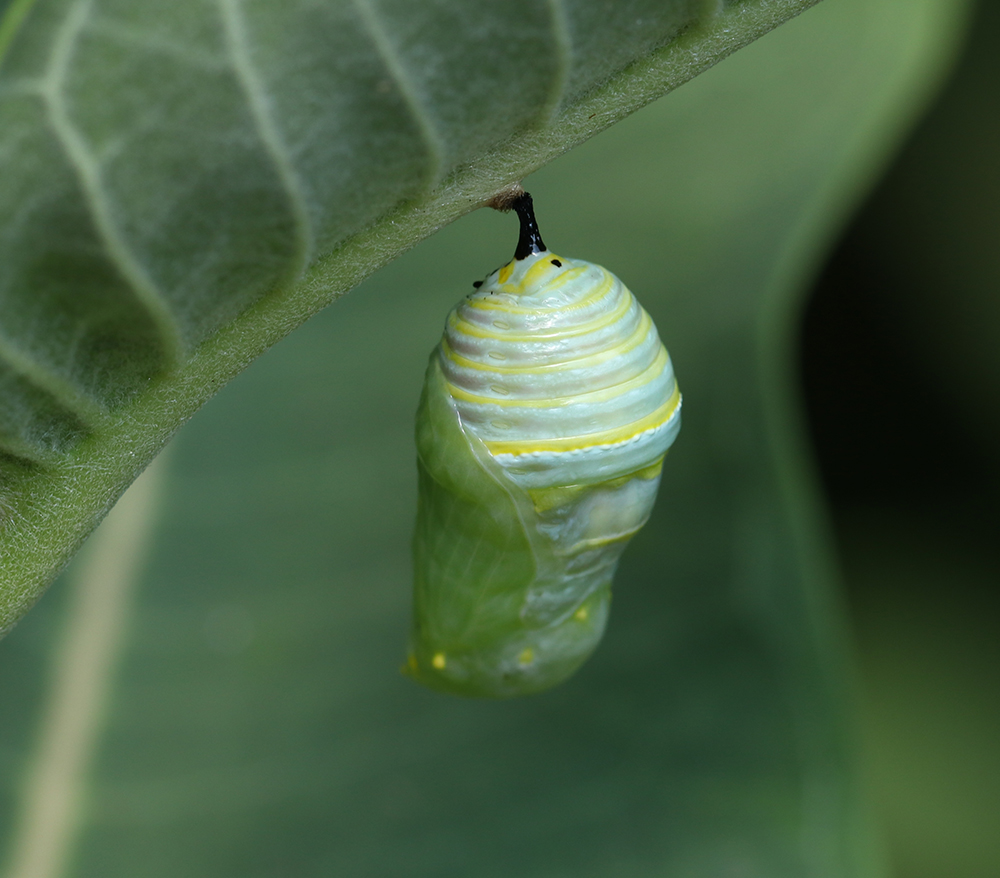
Same caterpillar as pictured above, a few minutes later, as the transformation from caterpillar to chrysalis is almost complete. Photo by Debbie Roos.
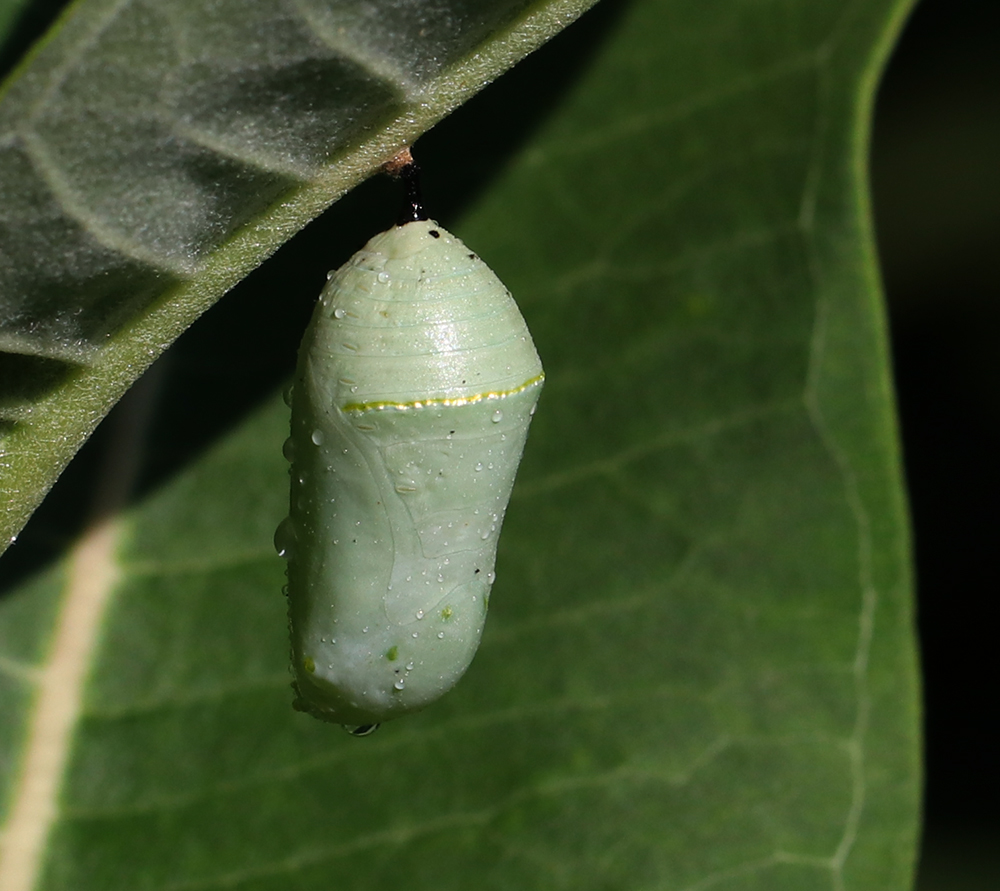
The transformation to chrysalis is complete and pupation begins! Photo by Debbie Roos.

Ten days later the monarch butterfly ecloses (emerges) from the chrysalis. Photo by Debbie Roos.
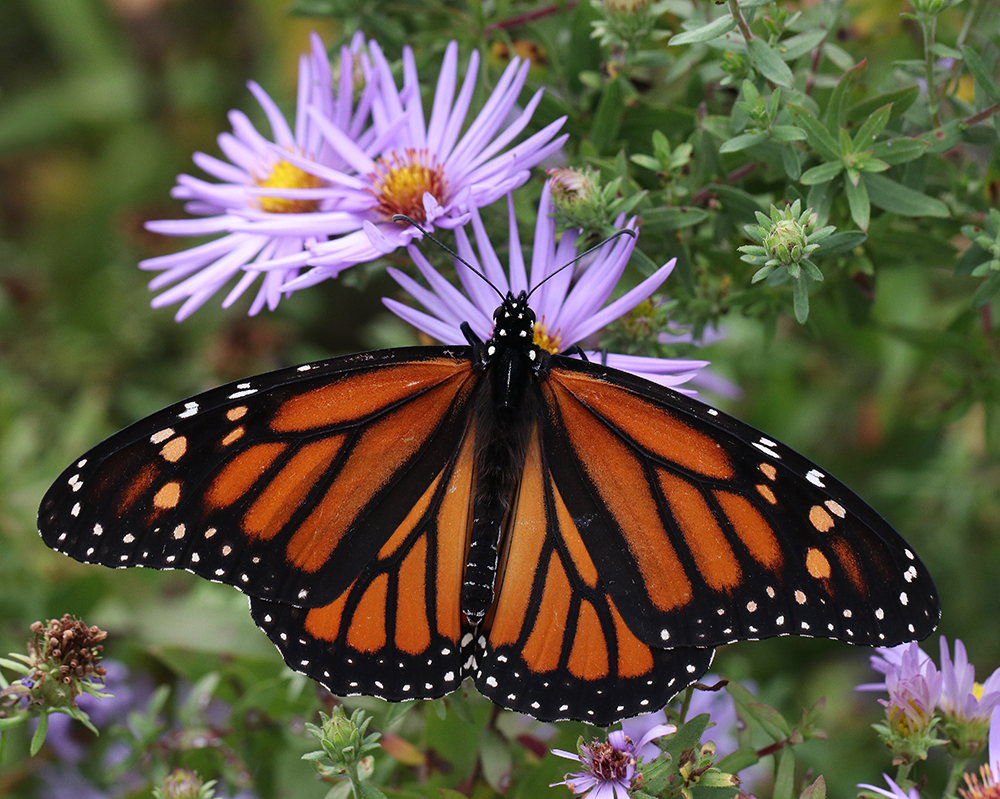
Monarch nectaring on aster. Photo by Debbie Roos.
For more information:
Monarch Butterfly Proposed For Listing Under The US Endangered Species Act – Xerces Society
Cooperative Extension’s Pollinator Paradise Demonstration Garden


